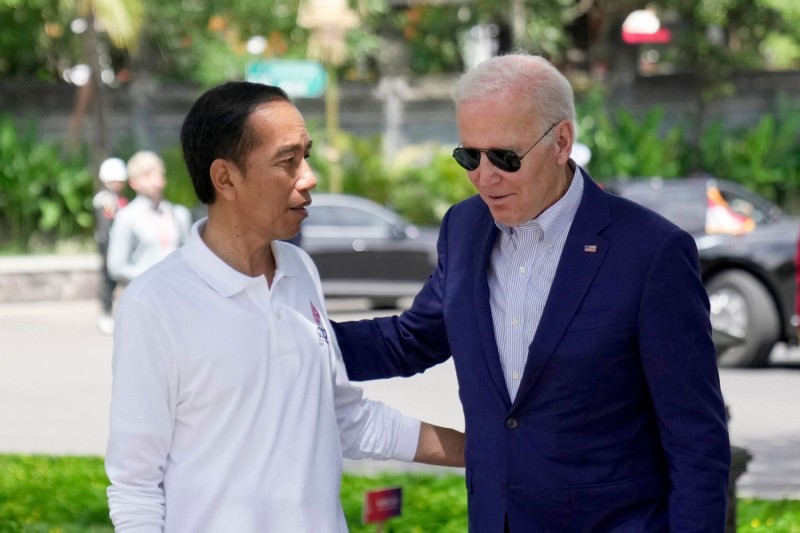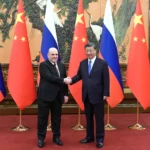
- ASEAN and the Quad Inch Closer Together
Southeast Asian skepticism toward the foursome is softening.
Australia was supposed to host the third in-person summit of the Quadrilateral Security Dialogue (or Quad) in Sydney on Wednesday, May 24, but plans hit a snag when debt-ceiling shenanigans in the U.S. Congress forced President Joe Biden to cut his travels short. Instead, the leaders of Australia, India, Japan, and the United States met at the sidelines of the G-7 summit in Hiroshima, Japan, last Sunday. Despite the abrupt change of schedule, the Quad issued an unprecedentedly detailed joint statement on practical initiatives, such as the launch of the Quad Infrastructure Fellowship, the Quad Partnership for Cable Connectivity and Resilience, and the Quad Investors Network. The four leaders also emphasized cooperation with regional institutions, such as the Association of Southeast Asian Nations (ASEAN).
The Quad has had more than its share of fits and starts since it was launched in 2007 by the four countries to coordinate strategy and policies affecting the Indo-Pacific. In particular, the Quad long struggled to find acceptance in Southeast Asia, a region increasingly at the center of geopolitical competition. Some Southeast Asian countries can appreciate the Quad’s humanitarian agenda, including vaccine cooperation, disaster relief, and other humanitarian assistance. But there has also been a healthy dose of skepticism and discomfort with the Quad’s narrative of containing China. There are few geopolitical developments Southeast Asians fear more than their region getting caught in the maelstrom of superpower competition—and having to choose sides.
Lately, however, there seems to be a shift in attitudes, with Southeast Asia’s policy community increasingly open to the Quad. According to the State of Southeast Asia 2023 survey published by the ASEAN Studies Centre at the ISEAS-Yusof Ishak Institute, slightly more than half of Southeast Asian experts polled said that a stronger Quad will be a positive development for the region—with only 12 percent disagreeing. When asked what ASEAN-Quad cooperation would mean for the region, 69 percent view the Quad as beneficial for the region or complementing the ASEAN’s own efforts to facilitate cooperation in Southeast Asia and beyond. Surprisingly, just 10 percent of respondents fear that engaging with the Quad will force ASEAN countries to choose sides, and not even 7 percent are afraid that ASEAN-Quad cooperation will provoke China.
Why the shift in favor of the Quad in Southeast Asia? Part of the answer is that today’s version of the Quad is vastly different from its earlier iterations, when the group focused primarily on security strategy and countering China. Under the Biden administration, the Quad’s emphasis has shifted to focus on delivering regional public goods and services that Indo-Pacific countries are keenly interested in, including global health care, climate policy, infrastructure, disaster response, and education. By inserting ASEAN-friendly language in its vision—for example, the phrase “free, open, prosperous, and inclusive”—the Quad has reframed its purpose from exclusively countering China to a broader vision that appears to support ASEAN countries.
ASEAN’s long-standing suspicion of the Quad stemmed from the latter’s genesis and initial development in the context of geopolitical competition. Linking the Indian and Pacific Oceans in a single strategic vision—and framing it as a grand struggle between democracy and autocracy—did not go over well in Southeast Asian countries, few of which are Western-style liberal democracies.
While the original motive may have been to form a traditional security framework, the reality within the Quad is that its members often had diverging national interests. In 2008, for instance, then-Australian Prime Minister Kevin Rudd decided that his country should switch course, accommodate China, and disengage from the Quad. Several years of dormancy followed until geopolitical changes, including China’s rising assertiveness in the region, led to the Quad’s revival in the waning years of the Obama administration. Under the Trump administration, Washington’s vision of the Indo-Pacific and the Quad was essentially security-oriented and targeted against Beijing.
The Quad’s refocusing from security to delivering practical, tangible benefits has been much better received in Southeast Asia—especially during the COVID-19 pandemic, when the Quad first shifted its focus. In fact, it was largely the pandemic that catalyzed the Quad’s shift to public health and other civilian policies, as the Biden administration worried China was successfully using vaccine diplomacy to enhance its ties in the global south. Meanwhile, Washington has pursued the security aspects of Indo-Pacific policy, including defense and containment, through the newly formed Australia-United Kingdom-United States pact (known as AUKUS) and various bilateral relationships, which has freed up the Quad for civilian objectives.
That said, there are limits to Southeast Asian countries’ willingness to engage with the Quad. Talk of Quad membership expansion to include countries in the region—such as the Philippines, a U.S. treaty ally that is expanding security ties with Japan—has been summarily dismissed. Such a step is widely seen as a threat to ASEAN unity and cohesion, and no member would risk stepping out of line.
What’s more, the Quad’s emphasis on political values, such as freedom and democracy, are difficult agendas for many Southeast Asian countries to fully support, given how few countries in the region are fully democratic. But the Quad’s other core principles do resonate with ASEAN countries: respect for the rule of law, sovereignty and territorial integrity, peaceful settlement of disputes without resorting to threat or use of force, objection to unilateral attempts to change the status quo, and the freedom of navigation and overflight.
From the vantage point of ASEAN countries, cooperation with the Quad brings several strategic advantages. First, Quad resources can go a long way in building ASEAN members’ capacity in dealing with crises and challenges, such as future pandemics. Second, institutional cooperation can help ASEAN influence the Quad’s strategic thinking on the future of the Indo-Pacific. Third, ASEAN can help shape an institutional division of labor between itself and the Quad.
For the Quad, cooperation with ASEAN will raise the former’s visibility in the Indo-Pacific region and give it more legitimacy to shape and nurture regional norms and rules. Perhaps most importantly at this stage of the Quad’s development, such cooperation will counter suggestions that this grouping is merely a tool to contain China.
As ASEAN members work toward greater unity, cohesion, and policy coordination in the region—a goal the group calls “ASEAN centrality”—some of them worry that Quad policies could undermine their efforts at unity. Indonesia, the group’s rotating chair this year, has made it a top priority to implement the ASEAN Outlook on the Indo-Pacific, a guidance document outlining the group’s Indo-Pacific strategy. Indonesia plans to organize an ASEAN Indo-Pacific Forum that aims to strengthen collaboration with China, Quad countries, and other external partners in infrastructure, business investment, the digital economy, and other fields. This diplomatic momentum opens a window for greater cooperation with the Quad, to the benefit of both sides.
The main remaining issue is how to manage China’s perceptions of closer ASEAN-Quad relations. China remains wary that the United States’ preponderant role in the region will be further strengthened by ASEAN-Quad cooperation.
To make China feel less threatened, ASEAN can take an incremental approach to the Quad, selecting areas of cooperation that will promise benefits not only to Southeast Asia and the Quad countries, but also to China and other key partners, such as South Korea and the European Union. One such area could be to help manage technology supply chain issues, which have risen to the fore as an area of strategic competition between Beijing and Washington. Here, Southeast Asia has the opportunity to buffer the impacts of sudden policy moves by either side.
An incremental approach to ASEAN-Quad relations also means experimenting with various levels of institutional cooperation. This could entail inviting ASEAN secretariat officials to Quad meetings, which would help facilitate an understanding of current and future Quad plans. This could be followed by informal ASEAN-Quad consultations in one or two policy areas of particular concern to ASEAN members, such as energy security. The development of functional cooperation that can produce tangible, practical benefits for the region will be viewed more favorably—including by China—than political statements of grand intent that only raise suspicions.
In a strategic environment increasingly marked by intensified Sino-U.S. competition, ASEAN has a key role to play to alleviate tensions. The Quad, for its part, has indicated the importance to “ensure all nations, large and small, continue to have a voice.” As views across Southeast Asia shift toward a more positive take on the Quad, now is the time for both blocs to seize the opportunity and move toward closer ASEAN-Quad cooperation.
Sharon Seah is a senior fellow at the ISEAS-Yusof Ishak Institute and the coordinator of its ASEAN Studies Centre. Twitter: @Sharon_Seah
Kei Koga is an associate professor at Nanyang Technological University’s Public Policy and Global Affairs Program and a nonresident fellow at the National Bureau of Asia Research. Twitter: @K__2010




























Join the Conversation
Commenting on this and other recent articles is just one benefit of a Foreign Policy subscription.
Already a subscriber? .
SUBSCRIBE
View 1 Comments